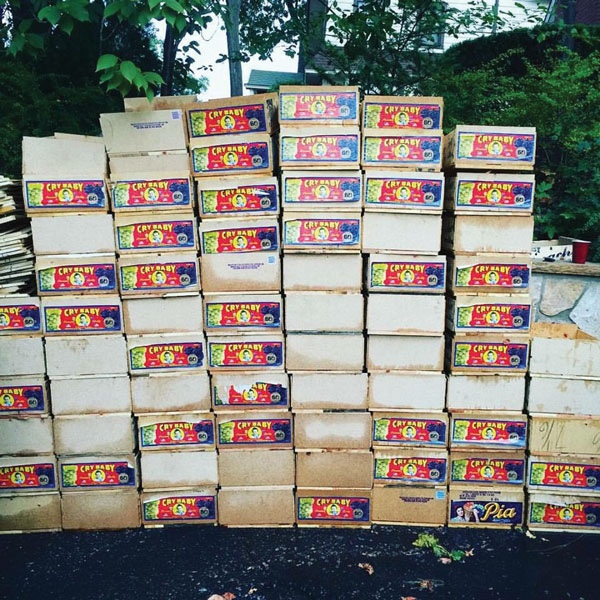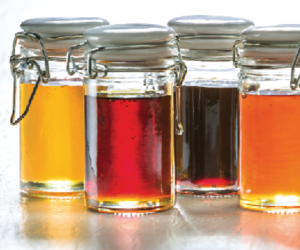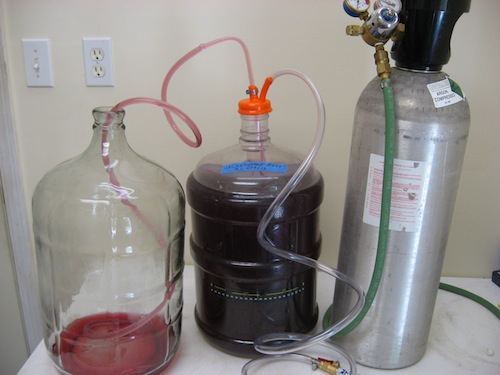Many home winemakers find a “steady state” for their wine production: Making enough wine every year to meet current needs for themselves, friends, and family. They keep the cellar filled and have enough variety to please their palates. Equally important, the steady output of fermentations suits the equipment and facilities they already have.

On the other hand, my years of teaching the “Making Wine from Grapes” Boot Camps at the annual WineMaker Magazine Conference have taught me that many other home winemakers harbor ambitions to make more. I saw similar trends when I was a partner in a home winemaking shop: An urge by many to make more wine every year. Sometimes to eventually go pro and become a commercial winemaker. Their scale-up goals include working with a broader scope of grape varietals, the opportunities to make blends, and the chance to build a collection that allows significant aging of the best vintages.
So what does it take to scale up? My focus here will be on wine made from fresh grapes. Excellent wines are made all the time from kits, concentrate, frozen must, and other fruits. By far the dominant share of larger-scale winemaking is with fresh grapes at harvest time. What does it take to move up from the quantity of grapes for, say, a five-gallon (19-L) batch to making 200 gallons (760 L) at a time? I choose that starting level because it is about where many home winemakers start. One-gallon (3.8-L) micro batches are possible, but with only four or five bottles to show for it, the return on effort is low. For the upper end, I am choosing the U.S. federal limit for no-license home winemaking in a home with two or more adults (a single adult is limited to half that). While clubs, family groups, and informal gatherings of friends may collectively produce more wine, once you can produce 200 gallons (760L) on your own you are well set up for continuing your winery growth. Facilities, equipment, and labor all change as you go from the lower end of this scale to the upper.
Facilities for our starter batch are quite simple. Five gallons (19 L) of wine requires roughly 100 lbs. (45 kg) of grapes. When I was at the retail store, I shared the rule of thumb that from 100 lbs. (45 kg) of grapes you can get about six gallons (23 L) of juice for white or rosé wine or about 10 gallons (38 L) of must for red. In either case, after fermenting, pressing, racking, and aging you can probably count on about five gallons (19 L), or two cases, of finished wine. Because those volumes mean just a few carboys or buckets, the space requirement is just a few square feet of “winery.” You can make your wine in just about any indoor space or even outdoors if temperatures are mild and you can protect the wine from sunlight. A spare bathroom, a shower stall, or a tub can be pressed into service and has the advantage of plumbing for cleanup nearby. A kitchen pantry might serve similarly, or, if you forgo the plumbing you can make do with a closet, shed, or part of the garage. Since your fermenters can easily be carried around, equipment can be taken outside or to the kitchen for washing. This ad-hoc winery should work fine up to about 200 to 400 lbs. (90 to 181 kg). Those quantities will put you in the range of handling up to about 20 gallons (76 L) of wine and 30 gallons (114 L) of must.
The garage can still be used — indeed, there is a whole informal class of French commercial winemakers known as “garagistes.”
Once you move beyond that range, say you want to make 50 gallons (189 L), you will probably want better space. For red wine, you will be using three or four food-grade trash can-sized fermenters or one large bin and the kitchen or a closet will probably not work anymore. The garage can still be used — indeed, there is a whole informal class of French commercial winemakers known as “garagistes.” You will need about the space of one car on the garage floor for your winery. Plumbing is still a question, but a garden hose in the driveway will probably get you by. At about this size winery, it may be time to begin thinking about a dedicated shed, an outbuilding, or putting an internal wall in the garage to keep odors of gasoline out of the winery air.
When you go to the 75 to 200 gallons (284 to 760 L) level, it is time to seriously consider dedicated space. While you can use some temporary space every year — like a crush pad in the driveway — you are going to need year-round space for the rest of your wine processing. Since 200 gallons (760 L) will require around 3,000 lbs. (1,360 kg) of grapes, your crush area and grape handling facilities will benefit from access by mechanized equipment. It is inconvenient to carry these weights around in buckets and picking bins. (For those of you following my calculations at home, you can see that I am estimating 6.67 gal. per 100 lbs. (25 L per 45 kg), rather than the 5 or 6 gal. (19 to 23 L) mentioned earlier. At this scale, you are approaching commercial production, where they commonly estimate 150 gal. per ton or 7.5 gal. per 100 lbs. (28 L per 45 kg). A large factor in the shift is heavier pressing, but lees recovery and smaller racking losses also play a part. You will need room for nine or ten trash can-size containers or about three of the bins commonly called “half ton.” These are square plastic bins about 4- ft. each side and 2-ft. deep (1.2 x 1.2 x 0.6 m). Each bin holds about 1,000 lbs. (454 kg) of grapes as picked, hence the half-ton name. That one-bay garage space should still work, but keep in mind you need room to move around as well. At this point, temperature control and ventilation may affect your planning. Insulating your space will help, but you may also need dedicated cooling. Ventilation is especially important during primary fermentation. Very large amounts of carbon dioxide will be generated from this volume of fermenting grape juice and you need either large doors and windows or active fan-driven ventilation to prevent a dangerous atmosphere. While today’s column focuses on grape handling, if you are designing or remodeling a dedicated space, keep in mind room for laboratory testing, electrical utilities, and the provision for water supply and drainage.
Grape handling equipment mostly involves moving, crushing, and containing the grapes. At the smallest scale, getting the grapes home is simply a matter of putting a few buckets or picking bins in the car. At the middle size range, you can use an SUV or small pickup. I often buy about 500 lbs. (227 kg) of grapes from a vineyard. My Subaru Outback can hold four 32-gal. (121-L) square plastic fermenting bins in the back. As each bin holds around 125 lbs. (57 kg) of grapes as clusters, I can get my whole purchase home inside the car. Above this range, you will need a full-size pickup or a utility trailer. For three half-ton (450 kg) bins as mentioned above, you will need to stack them in the truck bed (and strap them down) or use a trailer big enough to hold them all.
When it comes to unloading at home, buckets and picking bins are easy — no equipment required. The kind of square bins I use can be unloaded by two people and then moved around with a dolly or in a small utility trailer behind an ATV or garden tractor. When you get to the half-ton (450-kg) bin size, you need a way to get the grapes out of the truck or off the trailer. That may be as simple as sliding down a trailer ramp or as complex as using a forklift and a pallet jack. If you go with wheeled equipment, your plans need to include the kind of travel surface that the equipment needs. At medium size, a gravel driveway may work but at the larger end of the range, concrete or asphalt paving is probably needed. There is one other alternative for unloading half-ton bins without mechanized equipment, but it is hard work and takes quite a while: A pitchfork. You can fork the bunches of grapes over the side of the truck bed into smaller fermenting bins, leaving the transport bins empty. Empty, they are light enough to be moved and washed by hand.
Once you have your grapes unloaded, your next equipment is for crushing. While it is possible to crush and destem 100 lbs. (45 kg) by hand, a small roller crusher or manual crusher/destemmer makes it much faster and more efficient. At some point beyond that, perhaps around 500 to 1,000 lbs. (227 to 450 kg), you will want to invest in an electric crusher/ destemmer. Most models sold in home winemaking shops can process about one ton (900 kg) per hour and can meet your needs up to several tons — higher than the high end in this column. To move the grapes into the crusher, picking bins or buckets can be poured right into the hopper. If you are working with mid-size bins like mine, you can tilt one that is full of grapes, dumping the grapes into picking bins that you can lift up to the crusher. At the half-ton (450 kg) size, moving the grapes either requires a special bin attachment for your forklift or tractor, or a lot of pitchfork work.
More convenient (and more expensive) than a standard crusher/destemmer is an electric destemmer with a must pump. Instead of positioning the crusher over a bin and collecting the must by gravity, a lower chamber of the device collects the must and pumps it out through a 2-in. (5-cm) diameter flexible hose. With that machine, you can crush where convenient — possibly forking your grapes directly from the pickup truck — and pump the must to your fermenters. The only time I used one of these the hose was only about 10-ft. (3-m) long, so be sure the equipment you choose will work with your facility. These destemmers typically have wheels so paved surfaces are needed.
Finally, let’s look at labor. For five to, say, 25 gallons (19 to 95 L) of finished wine you can do this mostly by yourself. One helper may be needed to position the crusher/destemmer over the fermenting bin, but otherwise you can handle things. Next up, in the middle range, you will almost certainly need one or two helpers on crushing day to move equipment, transfer grapes, and wash the equipment. If you get up into the one-ton (450 kg) handling range, you will definitely need a team. In my own grape processing, I have found the largest batches I do are readily handled by three to five people. If you use a crew that size and make that much wine, be sure to reward your helpers well!







